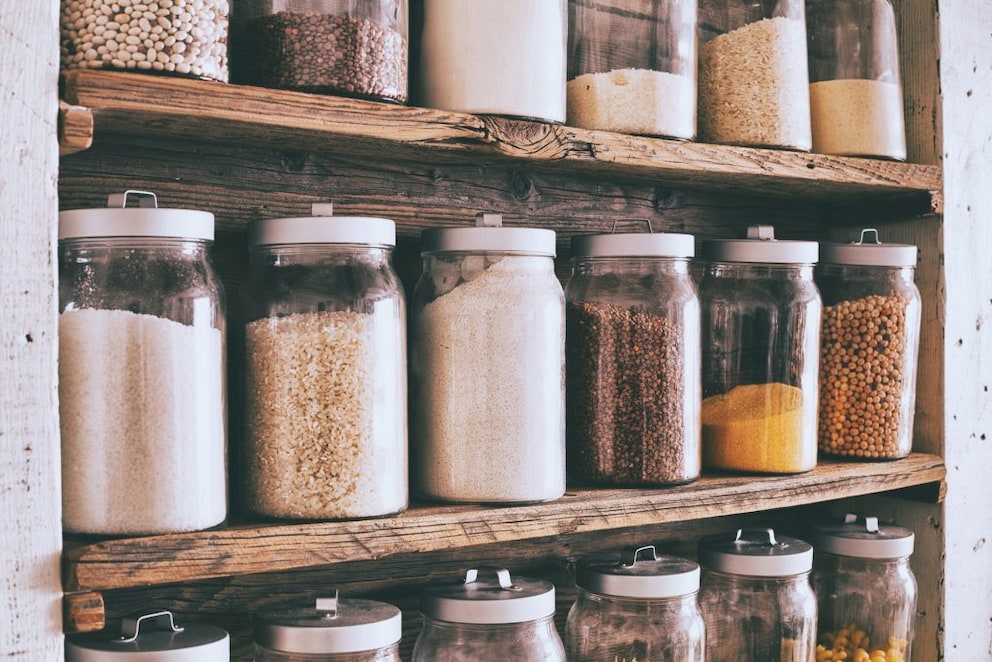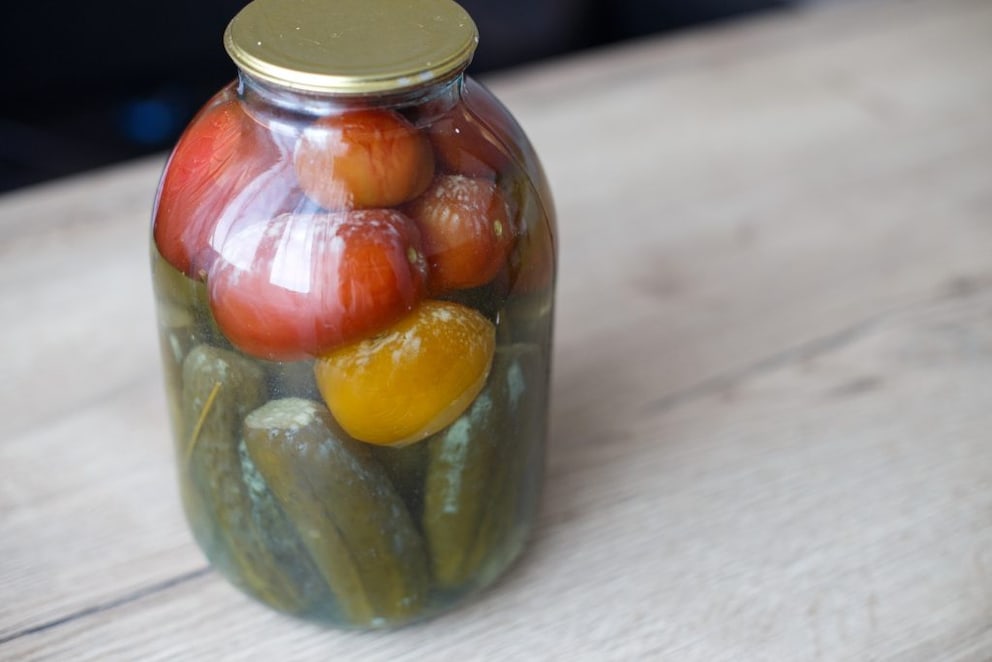April 10, 2022, 11:48 am | Read time: 5 minutes
There’s no doubt that a pantry is practical, but setting one up comes with several challenges. To prevent chaos or pests from taking over, it’s essential to have some knowledge about the optimal storage of food in small, enclosed spaces.
Essentially, the pantry is an extension of the kitchen. Anything that doesn’t have a place or suitable storage option in the kitchen ends up as a reserve in the home’s pantry. That’s good, but how should it be optimally organized? Typically, the space in a pantry is limited. It’s important to use the space smartly.
A Pantry with a System
Since a pantry usually has limited floor space but more height, it’s wise to invest efficiently in this dimension. Shelves that reach up to the ceiling are a suitable choice. A custom shelving system that wraps around corners, with variously sized compartments and different shelf depths, is ideal for storing all supplies sensibly.

Sturdy support is provided by shelves made of solid wood or metal. Naturally, shelving systems that reach the ceiling should include step aids. Instead of precariously balancing on items like water crates or straining unnecessarily, a foldable step stool or a mini ladder is a good addition to any pantry.
Also interesting: Using the right storage containers to combat food moths
Making the Most of Doors
Almost every pantry suffers from a lack of space. Therefore, the door should not become an additional problem and should open outward rather than inward. This way, no valuable space is lost, and you don’t have to awkwardly maneuver around the door. Folding or sliding doors are also an adequate solution in this case.
Depending on the type of door chosen, the door panel or, if available, a wide door frame can serve as a space for a supply list. Here, you can easily note which foods are running low. This list also serves as a reminder for the next shopping trip. Alternatively, a writable board is a good solution.
Ventilation and Dehumidification
Proper ventilation and dehumidification of a pantry are crucial for the optimal storage of food. Nowadays, buildings are so well insulated that unheated pantries are no longer as cool as they once were. Without appropriate ventilation technology, room temperature prevails, which means most foods spoil quickly.

An ideal temperature is about 59 degrees Fahrenheit and a humidity level of around 70 percent. If these conditions can’t be maintained, it creates an optimal environment for microorganisms, bacteria, mold, and decay. In this case, a ventilation system is needed. If that doesn’t help, a dehumidifier that binds water vapor should be installed. When using electronic devices, remember that they also generate heat. Therefore, it’s advisable to consult an expert before taking such measures.
Ensuring Adequate Lighting
Most pantries have no windows and are thus devoid of natural light. Therefore, a well-thought-out lighting system is needed to provide enough light in the otherwise dark room. Individual spots or spotlights, whose beams can be individually directed, are recommended. The light switch should be located near the door. A lighting system with a motion sensor can also be a solution and is ideal when both hands are full of storage containers when leaving the pantry.
What Items and Foods Belong in a Pantry?
Clearly, dry foods, canned goods, and beverage supplies belong in a pantry. Typically, you’ll find salt, sugar, spices, various types of flour, as well as onions, garlic, pasta, and rice. The pantry is also ideal for storing various oils, legumes, or grain products like oats. In addition to canned goods and preserved foods, beverage supplies like different types of milk, water crates, and wines are often stored here.
Fresh foods can also find their way into the pantry, but only those that don’t require refrigeration, such as apples, pears, mandarins, avocados, and foods that are sensitive to cold (e.g., tomatoes) or light (e.g., potatoes). And because kitchens often lack space, small and large kitchen appliances are also frequently found in a pantry.
Keeping Order in the Pantry
A pantry is a useful space if you know how to organize it sensibly. It requires order and a basic storage system. With a little discipline, you can maintain a good overview, which helps monitor expiration dates and reduces food spoilage.
For optimal storage, first separate food from appliances like kitchen machines. Ideally, these should have a separate place within the pantry. Store long-lasting or rarely used foods on the upper shelves. Foods you consume frequently should be at eye level and preferably opposite the door. Heavy items like beverage and fruit crates, as well as potato sacks, should be placed on the lower levels.

How to Properly Set Up a Utility Room or Closet

These Foods Have an Almost Unlimited Shelf Life

Tips for Setting Up a Child’s Room for School
Food Storage
It’s advisable to place newly purchased foods and those with later expiration dates at the back of the shelf. Perishable foods and those nearing expiration should be in the front rows. Fresh foods like fruits and vegetables should be stored in ventilated crates for maximum shelf life. Foods that aren’t canned or vacuum-packed should ideally be transferred to airtight, food-safe containers. Glass containers are particularly useful for providing a clear overview at a glance.
A good alternative is labelable storage containers with clear labeling or distinct symbols. Despite careful, airtight storage, regular hygiene checks should still be conducted. If fruit flies or food moths find their way into the pantry, they multiply rapidly and are difficult to eliminate.

